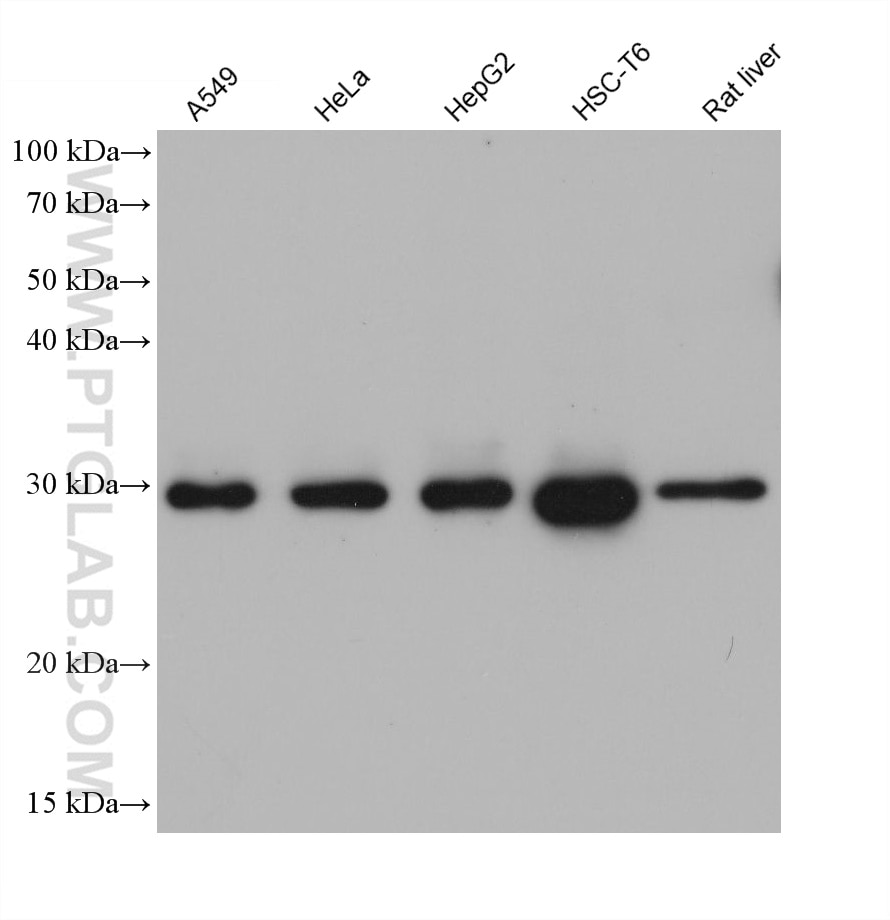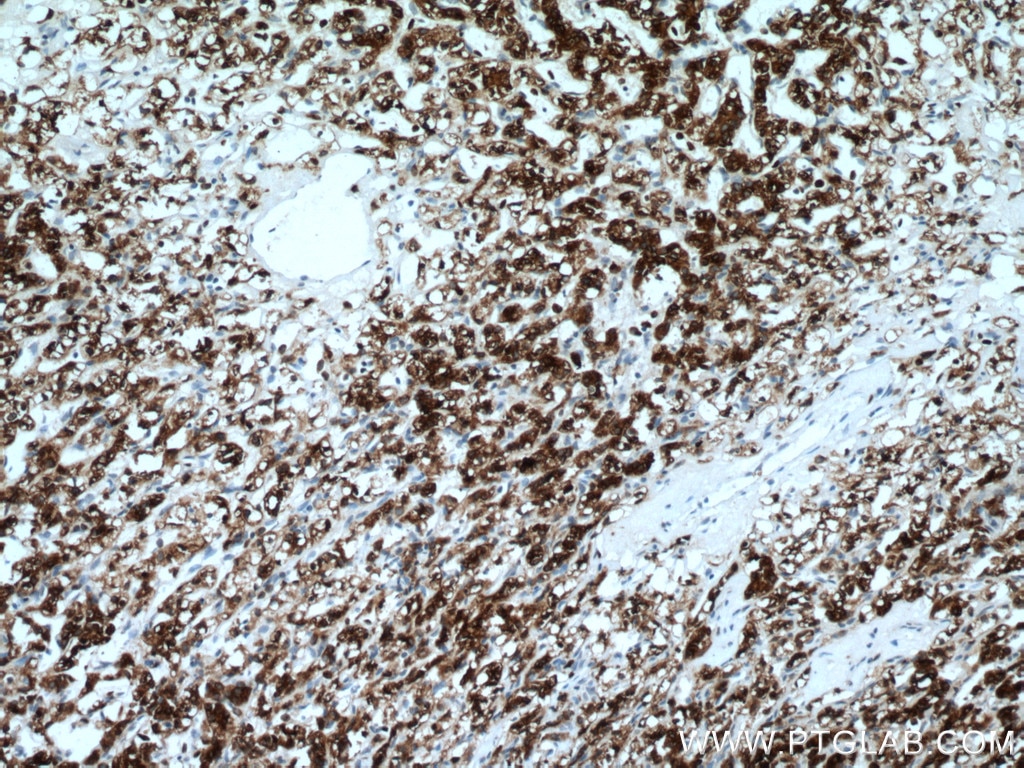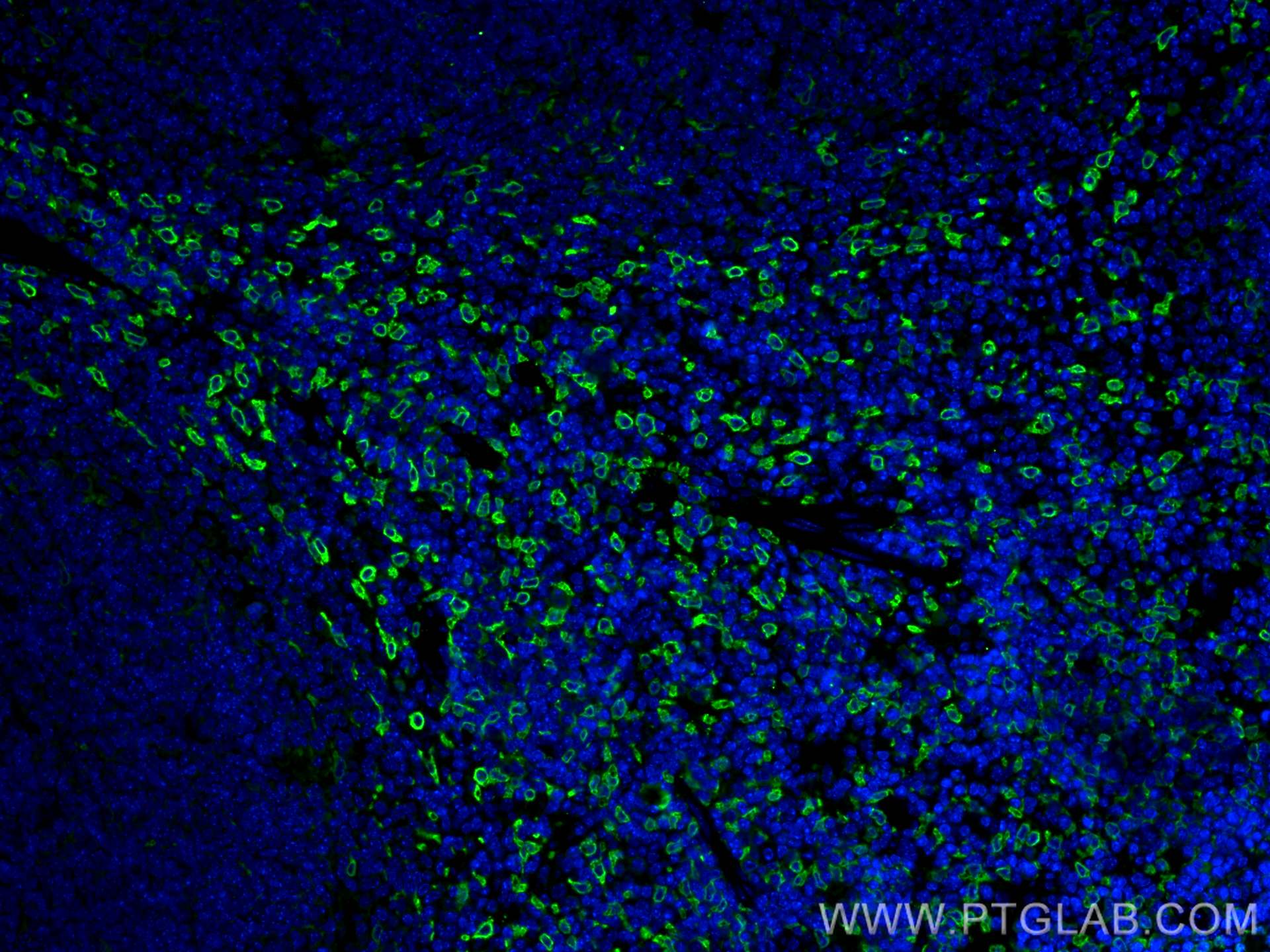Validation Data Gallery
Tested Applications
Recommended dilution
| Application | Dilution |
|---|---|
| It is recommended that this reagent should be titrated in each testing system to obtain optimal results. | |
Product Information
66743-1-PBS targets HO-1/HMOX1 in WB, IHC, IF-P, FC (Intra), ELISA applications and shows reactivity with human, mouse, rat, pig, rabbit samples.
| Tested Reactivity | human, mouse, rat, pig, rabbit |
| Host / Isotype | Mouse / IgG2a |
| Class | Monoclonal |
| Type | Antibody |
| Immunogen |
CatNo: Ag21296 Product name: Recombinant human HO-1 protein Source: e coli.-derived, PET28a Tag: 6*His Domain: 1-288 aa of BC001491 Sequence: MERPQPDSMPQDLSEALKEATKEVHTQAENAEFMRNFQKGQVTRDGFKLVMASLYHIYVALEEEIERNKESPVFAPVYFPEELHRKAALEQDLAFWYGPRWQEVIPYTPAMQHYVKRLHEVGRTEPELLVAHAYTRYLGDLSGGQVLKKIAQKALDLPSSGEGLAFFTFPNIASATKFKQLYRSRMNSLEMTPAVRQRVIEEAKTAFLLNIQLFEELQELLTHDTKDQSPSRAPGLRQRASNKVQDSAPVETPRGKPPLNTRSQAPLLRWVLTLSFLVATVAVGLYAM 相同性解析による交差性が予測される生物種 |
| Full Name | heme oxygenase (decycling) 1 |
| Calculated molecular weight | 33 kDa |
| Observed molecular weight | 33 kDa |
| GenBank accession number | BC001491 |
| Gene Symbol | HO-1 |
| Gene ID (NCBI) | 3162 |
| RRID | AB_2882091 |
| Conjugate | Unconjugated |
| Form | |
| Form | Liquid |
| Purification Method | Protein A purification |
| UNIPROT ID | P09601 |
| Storage Buffer | PBS only{{ptg:BufferTemp}}7.3 |
| Storage Conditions | Store at -80°C. |
Background Information
Heme oxygenase (HMOX1) catalyzes the first and rate-limiting step in the degradation of heme to yield equimolar quantities of biliverdin Ixa, carbon monoxide (CO), and iron. It has 3 isoforms: HO-1 is highly inducible, whereas HO-2 and HO-3 are constitutively expressed (PMID:10194478). Heme oxygenase-1 (HO-1) is expressed in many tissues and vascular smooth muscle cells, and endothelial cells (PMID:15451051) and has been identified as an important endogenous protective factor induced in many cell types by various stimulants, such as hemolysis, infiammatory cytokines,oxidative stress, heat shock, heavy metals, and endotoxin (PMID: 11522663). And the full-length HO-1 is very unstable and susceptible to truncation that generates an inactive, soluble form (28 kDa) (James R. Reed, Pharmacology, 535-568).














